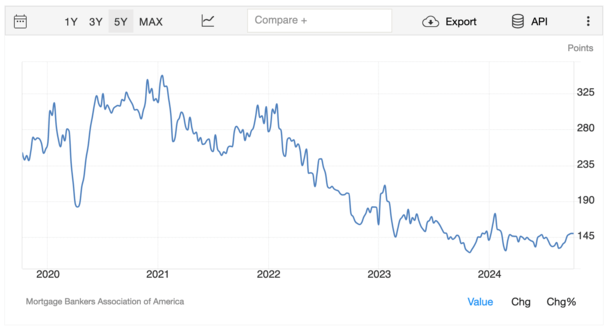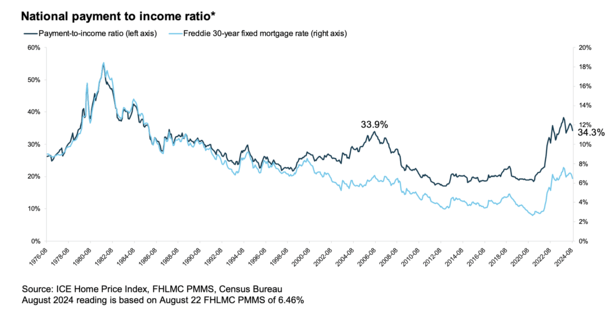How servicers address home insurance challenges
unitedbrokersinc_m7cmpd2024-10-11T15:22:27+00:00Luke Sharrett/Bloomberg With two major disasters striking the U.S. within weeks, awareness of insurance challenges many homeowners encounter is coming to the fore, and servicers find themselves caught in the middle.Even before Hurricanes Helene and Milton slammed the Southeastern U.S., homeowners in several states, including storm-ravaged Florida, already were seeing skyrocketing premiums and the departure of several insurance carriers.With 2024 already one of the most devastating hurricane seasons this century, further price hikes and decreased availability are likely in the offing if recent historical trends are an indicator. As entities that regularly keep their eyes on mortgage borrowers' ability to pay, servicers frequently end up playing the role of bad cop when the insurance industry provides unpleasant surprises. "I'm sure that we are the deliverer of bad news, and this does not sit well with all homeowners," said Larry Goldstone, president of capital markets and lending at BSI Financial Services.Servicers can prepare themselves for expected borrower stress, though, applying strategies they've learned. Earlier this year, leaders discussed with National Mortgage News how current homeowners insurance challenges were impacting their customers and possible methods that might help alleviate concerns for stakeholders. Keeping borrowers informedWith servicers often holding funds in escrow to make premium payments on homeowners' behalf, BSI typically reaches out to customers two months or more in advance of insurance. The notification might be the first time a borrower realizes the extent of a premium increase, requiring their servicer to also plan accordingly. "To the extent that homeowners don't have enough money escrowed, we will then be adjusting their mortgage payment higher on a go-forward basis," Goldstone said. "I am sure that we're having some difficult conversations with homeowners."An increasing number of homeowners today, though, seem to realize a hit to their wallet might be in store and are educating and preparing themselves. Their efforts to become better informed have eased stress on servicers. As news of the high cost of insurance spreads through news or social media, "the conversation is actually much better than it used to be," said Adel Issa, senior vice president of customer contact and loss mitigation for Carrington Mortgage Services. "It's part of everybody's vernacular now that, 'My insurance premium went up, not necessarily, my mortgage went up.'"Still, sticker shock leads to disgruntled customers, but detailed breakouts of the individual amounts on a bill at least brings them clarity."A lot of people understand immediately. We tend to be very detailed in our letters that we send out to our customers regarding before/after," Issa said. Lessening the blow to borrower financesFannie Mae and Freddie Mac, which require certain types of insurance on the loans they purchase, have suggested that large spikes in monthly payment amounts could be spread over time to lessen the effect of impact on borrowers, Goldstone noted."We have some latitude there around what we can do," Goldstone said. "We can spread the increment over a year, or anything from a year to five years. We can try to cushion the blow there a little bit."However, such efforts to help a borrower could affect servicer cash flow detrimentally in a way that must be accounted for as well. While a borrower's payments can be spread out, the servicer is still remitting the full premium amounts to insurers. "We're effectively loaning the borrower money at zero interest and then recovering it over time," Goldstone said.When costs are still too highWhen vulnerable communities see insurance carriers leave or costs jump to insurmountable levels following natural disasters, the search for coverage produces greater stress to already struggling borrowers. Servicers can better assist clients through self-help tools or by placing opportunities to find assistance in their client portals. Carrington's borrower dashboard called Homeamp also allows borrowers to take a detailed look at their account and may be able to offer options separate from new insurance coverage, including second liens or refinances, to reduce overall payment amounts. "There's all those little things that are unique to the customer. So Homeamp is unique to what the customer's actual numbers are," Issa said.BSI puts a link to a third-party marketplace on its portal and website that lists a range of homeowners insurance coverage beyond the most well-known brands. "There are lots of other insurance carriers out there that homeowners might not have heard of that operate in the market they're in," Goldstone said. "It's become much more valuable for homeowners in light of what has happened with insurance premiums over the last couple of years." Some insurance carriers on the marketplace often require consultations meant to help borrowers make the most cost-effective choice.The insurance of last resort Lender-imposed coverage becomes the solution of last resort when a client can't or refuses to obtain adequate coverage. When efforts have been exhausted, servicers have a right to force place insurance to ensure compliance. The coverage, though, typically will not cover homeowner possessions and is much more expensive than insurance the borrower could find themselves. "That's going to have a deleterious impact on the borrower's monthly mortgage payment, or potentially put the borrower at risk of defaulting or delinquent," Goldstone said. Servicers can be protected if a home proceeds through foreclosure after force-placed insurance is applied, though. Servicers will likely have made insurance payments if clients refuse, entitling them to recovery upon liquidation."We're at the top of the waterfall," he added.


